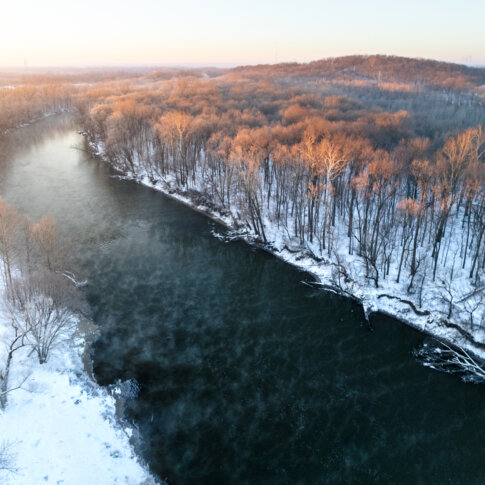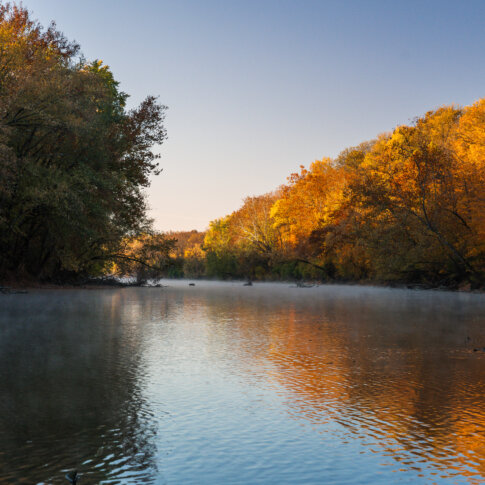On Tuesday, July 26, the City of Indianapolis along with a project team of consultants and designers presented the first renderings to the public of the proposed Henry Street bridge over the White River. Along with adjacent upgrades to roadway infrastructure on the west side of the White River near the former GM stamping plant, the Henry Street bridge will be designed to provide vehicular and pedestrian connectivity throughout the area and across the waterway. It will also reduce existing congestion on nearby thoroughfares, particularly Washington Street and Oliver Avenue.
During the presentation, the design team noted important elements of their planning process as well as their design constraints for the bridge: the team studied the hydraulics of the White River at this location and how that must impact the size, orientation, and profile of the bridge. A priority in the design process is multimodal traffic, with plenty of pedestrian space and amenities; indeed, the Henry Street bridge will be one of the only (if not the) only bridge in Indianapolis shared between vehicular and pedestrian traffic along which the majority of its width is dedicated to multimodal use. Ultimately, the team is tasked to design a bridge that meets waterway, environmental, usage, and budgetary priorities and constraints.
The City of Indianapolis and the design team presented two distinctive sets of renderings based on two different design themes. Meeting attendees were asked not just to vote on one theme or the other, but to contribute their thoughts on which design elements were working well, and which could be improved. One theme prioritizes a visual and auditory connection to the White River by including “windows” to the river below along pedestrian walkways as well as spaces for pedestrians to gather and rest while experiencing open views of the waterway. The second theme uses the Circle City motif throughout the length of the bridge with circular arches extending overhead and underneath the bridge at its various piers; this gives users the impression of moving through a series of gateways as they take in the view of the White River while traversing from one side to the other.
The project team noted that they have also reached out separately to individual neighborhoods to submit historic, local points of pride which could also be integrated into bridge design elements or as community identity monuments along the bridge. Strong elements of either concept presented at the meeting–in addition to other ideas that came afterward–could be included in the final “preferred alternative” for the bridge design. The design process is still very much ongoing.
Regarding next steps for the bridge project and adjacent roadway improvements, the City of Indianapolis has initiated the permitting process for the Henry Street bridge with the US Army Corps of Engineers and will similarly be applying for the appropriate permits through the Indiana Department of Natural Resources. Feedback collected at the meeting in July as well as from additional stakeholder and neighborhood meetings will continue to be considered in design work as it continues; full design completion is now anticipated for late summer 2023. Coordination with impacted utilities can also begin even before a final design alternative is selected by the Indianapolis Department of Public Works (Indy DPW).
Looking forward to construction, the project team estimates that work on upgrades to both roadways on the west side of the White River as well as the Henry Street bridge could begin as early as autumn 2023, with the road work complete by the end of 2024 and the bridge work complete by mid-2025.










